Corinne Diacre will go down in history as one of the most divisive head coaches of the French women’s national team.
Some in the national setup approve of her, while others severely disagree with her methods.
However, when it came to the players, particularly those with influence in the side, there is no doubt what the feeling was.
Captain Wendie Renard announced in February that she had become “fed up with the lack of professionalism” around the national side.
She eventually decided to step away from the National Team until changes were made.
The Lyon Féminin centre-back was swiftly joined by clubmates Perle Morroni and Griedge Mbock Bathy.
PSG Féminine forwards Marie-Antoinette Katoto and Kadidiatou Diani also decided to step away for the same reasons.
At that point, the Fédération Française de Football (FFF) stated that they would investigate how the team was being run.
They also reminded everyone that no one was above the institution of the national side.
Only five days later, though, things got worse for Diacre when FFF President Nöel Le Graët, one of her last remaining supporters, announced his resignation following investigations into claims of inappropriate behaviour.
With no one left to back her, it was a little surprise when she followed Le Graët out the door.
Her dismissal as head coach was confirmed earlier this month.
The search to replace her unearthed several candidates, and some people were interviewed for the role.
But the person who now looks set to take over is the current Saudi Arabia men’s head coach, Hervé Renard.
He has been in his current role since 2019.
Many football fans will know the French coach as the person who led his side to a remarkable win against eventual champions Argentina in the opening group game of the 2022 men’s World Cup.
Renard must work fast to successfully implement his ideas into the French women’s side, with the World Cup underway in just over four months.
This tactical analysis will examine in greater depth what he could change tactically before and after that and how France could eventually look under Hervé Renard's Tactics.
Hervé Renard Risk-free Attack
The first thing to mention is that Hervé Renard likes his teams to keep the ball and not take risks when moving it around.
Every side that he has coached during his 23-year career tends to dominate possession statistics (they have averaged 63.7% in 2023 so far) and regularly rack up the pass count.
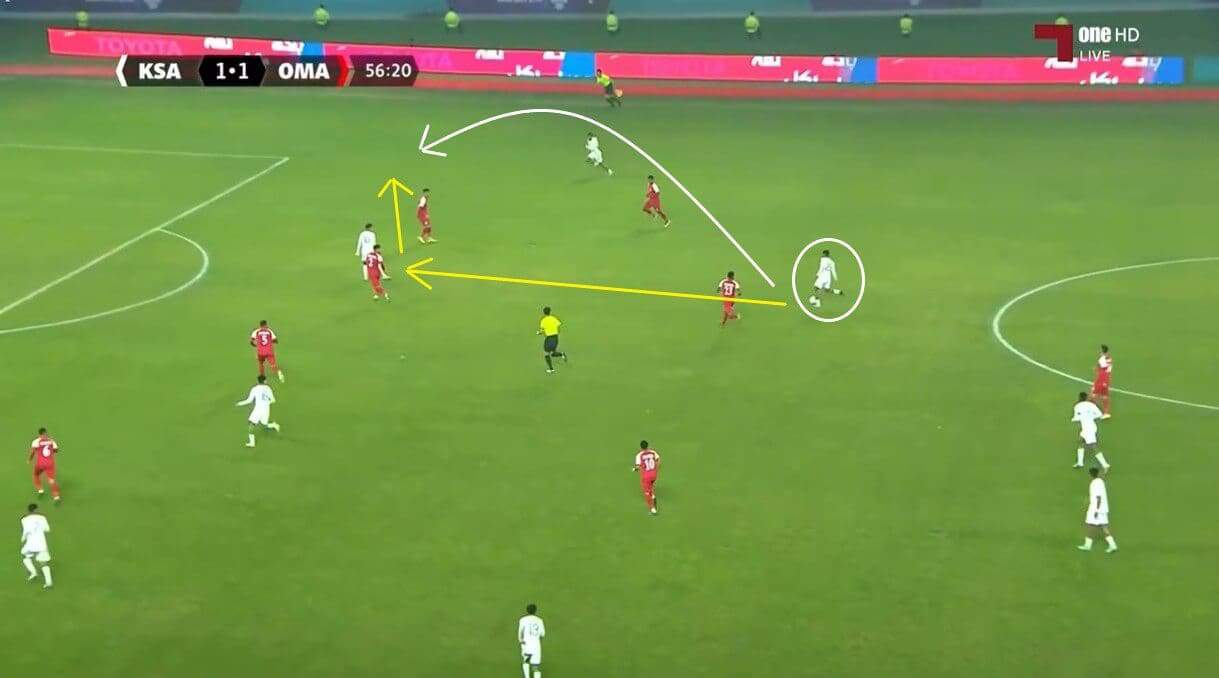
That idea of not taking risks is particularly evident above, with Saudi Arabia trying to feed the ball into the area behind Oman’s defensive line during the recent Gulf Cup.
With the space available and a player making a run into it, there is an opportunity to play the ball directly into their path.
As the yellow arrows show, Saudi Arabia plays through Turki Al-Ammar, making two shorter passes and not one aerial ball.
The Saudis immediately decrease the risk of possession being conceded in transit by doing so.
The key here is that players can control the ball and continually maintain accuracy at each stage of the move.
It is not only unique to his time in the Middle East because journalists and analysts in Africa also noted his desire not to take unnecessary risks when he was in charge of the Zambian and Ivorian men’s teams.
Therefore, if he is appointed as Diacre’s replacement, French fans can expect their side to adopt this tidier style of moving the ball around.
Playing with that mentality does depend on players’ good touch of the ball, though, which is not something every team has.
Fortunately for the French coach, the Saudi Arabian players have registered an 82.2% passing accuracy during 2023 and had an 83.2% accuracy for the entirety of 2022
The Saudis rarely give the ball away, which is one reason Hervé Renard has been so successful tactically during his time with them.
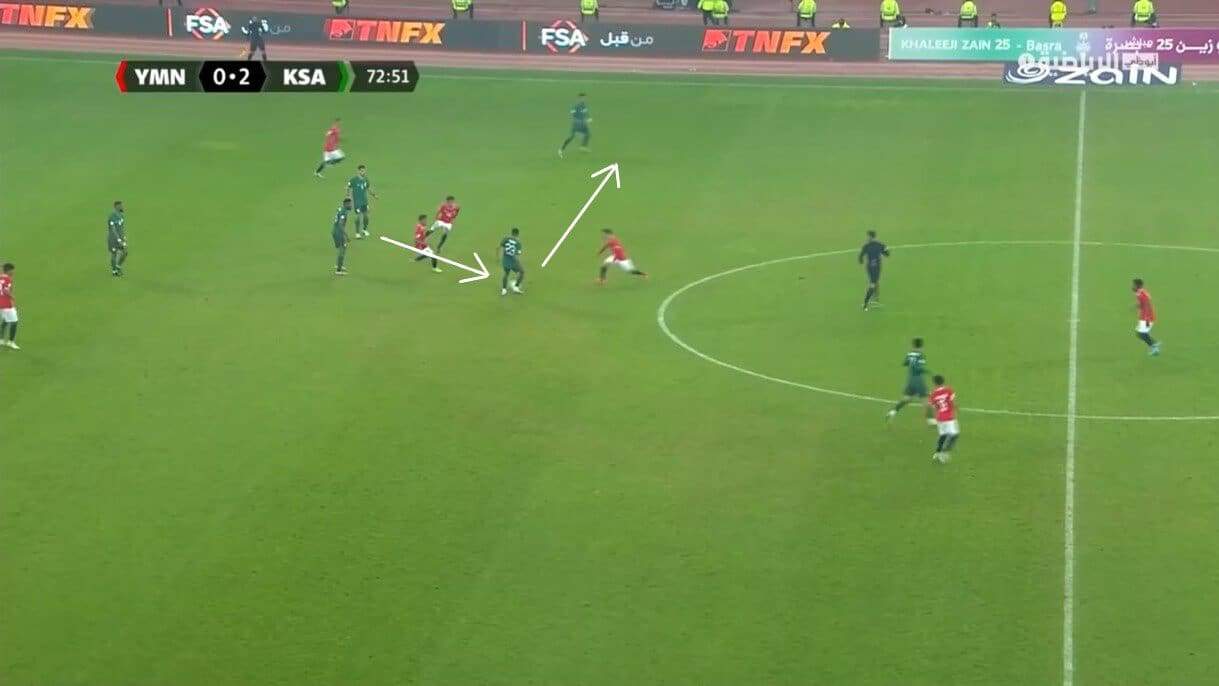
As shown in the image, they are playing through the Yemen midfield with a series of shorter passes during one of their many transitions from defence to attack.
As the arrows indicate, their ability to keep hold of the ball means that they don’t find it challenging to locate the open space on the far side of the field.
Playing this way requires several specific characteristics: communication and excellent spatial awareness.
Therefore, this only works if players recognise where they need to be and where the next pass needs to go, and it does take time to execute well.
Given that there isn’t much time between now and the Women´s World Cup, it might not be something Renard introduces at France´s National Team straight away, but it could be a tactic that becomes more visible in the long term.
Hervé Renard Hybrid Attack
However, Hervé Renard´s tactics do not involve only endless passing moments.
This is where his game plan's hybrid element comes in.
When in games, he always wants his players to continually scan for opportunities to release the forwards into the areas behind the defensive lines.
That means that they need to be good at recognising when to pass along the ground and when the time is right to abandon that and play directly into the final third.
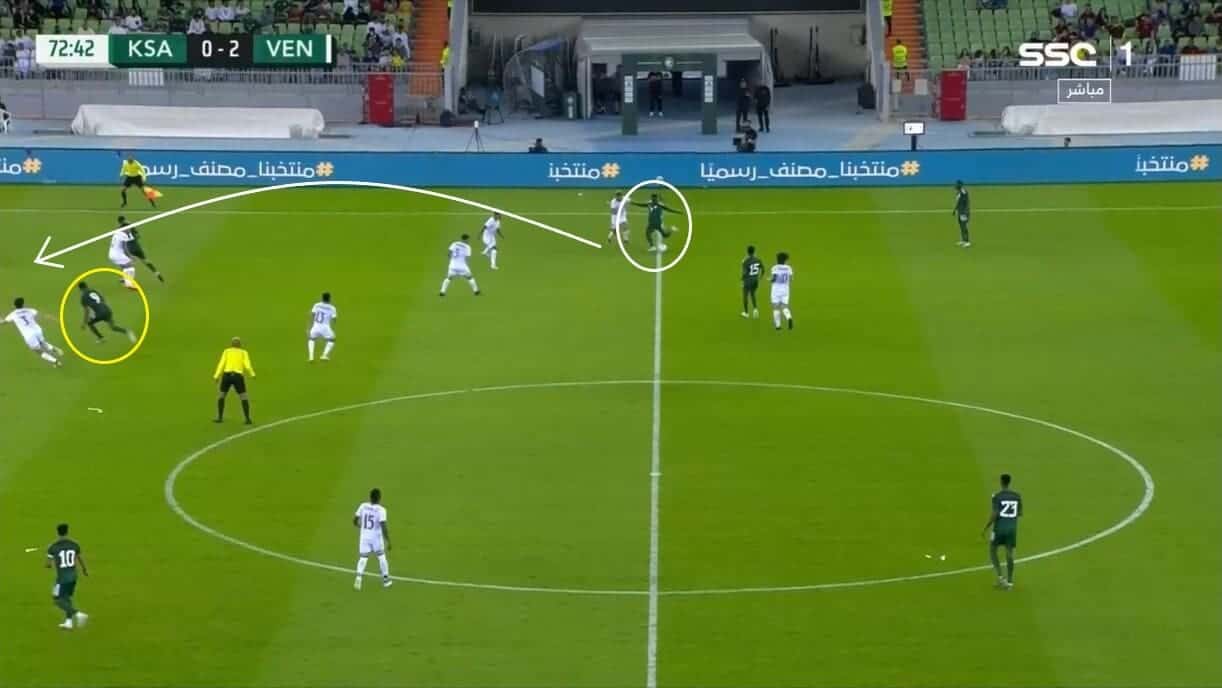
As shown above, Venezuela´s defensive line moving up the field created space in their recent friendly match.
Firas Al-Buraikan has now turned to make a run into that area.
His teammate spots this and immediately sends the ball in his direction.
Therefore, while his primary aim is to keep the ball on the ground and play through opponents risk-free, Renard also likes his teams to be direct when chances like this present themselves.
Those sharp switches in play can and do catch opponents out.
Hervé Renard Final Third Approach
The combination of possession-based tactics and direct play is one of the main reasons that Hervé Renard sets up a 4-2-3-1, which has been Saudi Arabia’s most-used formation under him.
This system allows the French coach to maintain numbers in the midfield to keep the ball and work opportunities and to have a target player at the top of the field ready for when those longer balls become appropriate.
Centre-forward: A Key Position In Hervé Renard Formations
To make that way of playing successful, though, Renard needs to trust the player at the top of the field to manage the opposing backline independently, as the image shows.
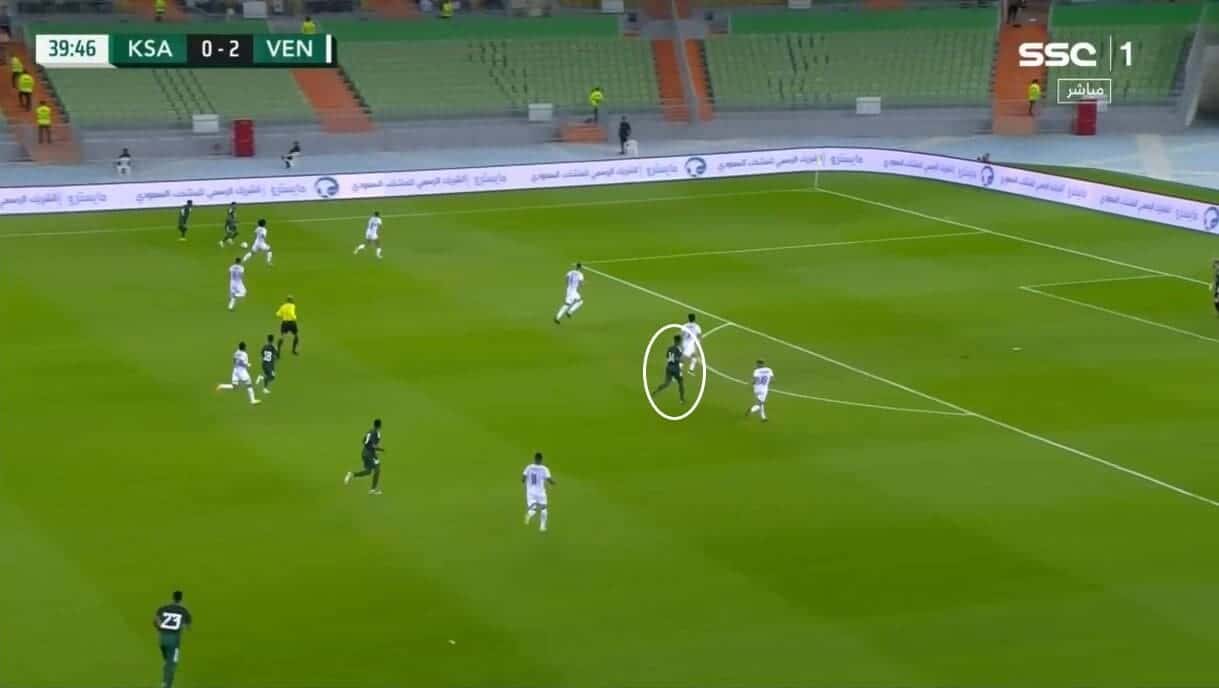
This can be difficult to find, but Saudi Arabia has taken steps to ensure its implementation.
Renard continually rotates those in that advanced position so they never have to stay there too long.
This allows everyone to get involved in the game through the free-flowing movement they play with and makes it harder for opponents to predict who will push forward and when.
So, it is another way that Saudi Arabia has adapted to another of their coach’s key demands and made it work.
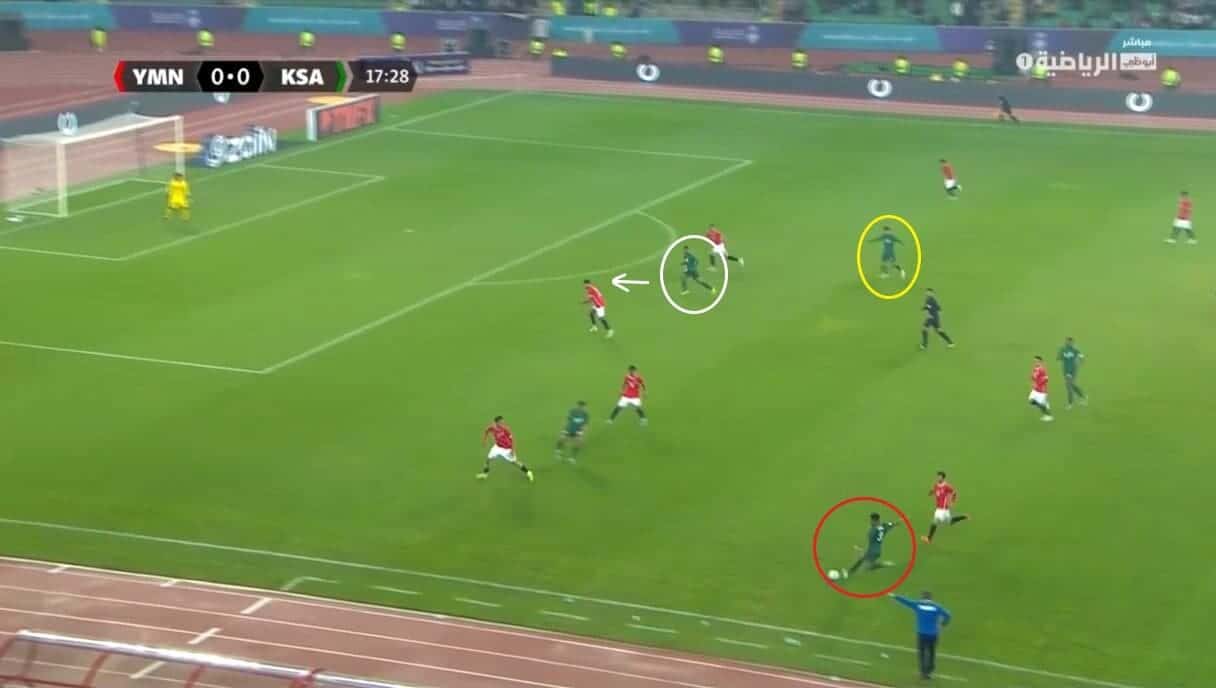
Another key point to mention about the player in the centre forward role is that they are not just a goalscorer but a creator too.
In this position, Hervé Renard demands that the attacker be just as skilled at manipulating opposing defenders and forcing them to leave spaces open as they are at getting on the ball and testing the opposing goalkeeper.
In this case, with left-back Ahmed Bamsaud looking to transfer the ball into the middle, Raed Al-Ghamdi, in the white circle, has opted to move forward and try to create space behind him for Sumayhan Al-Nabit to receive the ball.
Once Al-Ghamdi starts to edge forward, the two Yemen centre-backs, Harwa Yousef Al-Zubaidi and Mudir Al-Radaei, match his movement.
They instantly lose sight of the ball and allow Al-Nabit to score.
Therefore, Renard’s teams attack and create chances in various ways, which will suit the French women's players he has at his disposal.
Les Bleus have many different profiles in their midfield and forward units and a squad that can adapt to his methods.
Hervé Renard Full-width Field Usage
That variety is shown in another fundamental idea of Renard’s attacking tactics.
His sides are also known for making the pitch as wide as possible.
Below, Nasser Al-Dawsari has received the ball on the near side of the pitch and is as far over as he can get.
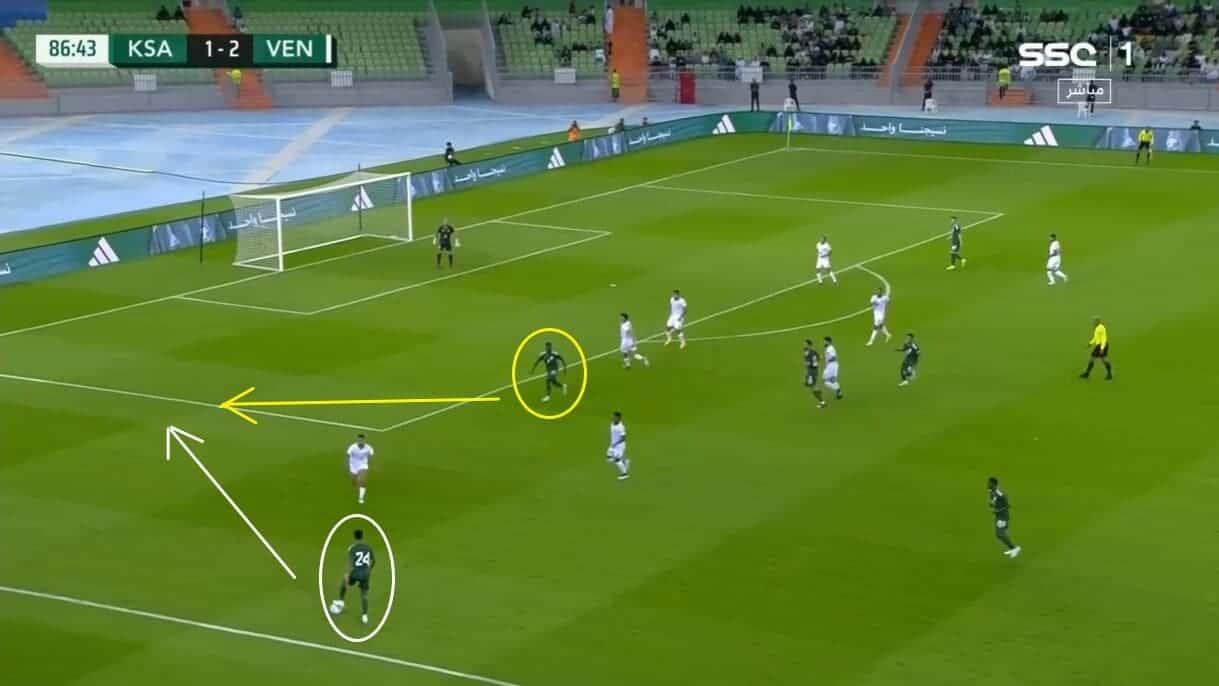
The fact that his teammates in the middle did not hesitate when sending the ball towards him shows how moving the ball towards the wing is often the first thing that Saudi Arabia thinks of when looking to keep their attacks alive.
Elongating their setup in this way also impacts the opposition, forcing them to stretch out rather than set up in a compact shape inside their own third.
This plays into Saudi Arabia’s hands, as gaps open up in the defensive ranks for them to exploit.
The fact that Venezuela right-back Alexander González came out here but was easily isolated demonstrates how Saudi Arabia is well-drilled in this and knows how to use it to their advantage.
In this case, once González had moved towards the ball, Abdulaziz Al-Bishi was able to run through the gap and receive a short pass from Nasser Al-Dawsari.
The team once again kept things simple and did not take unnecessary risks.
Hervé Renard Defensive Adaptability
When his teams are out of possession, Hervé Renard tends to focus on making them as robust as possible.
While he prefers a difficult-to-break-down shape, he is open to changing things around if necessary.
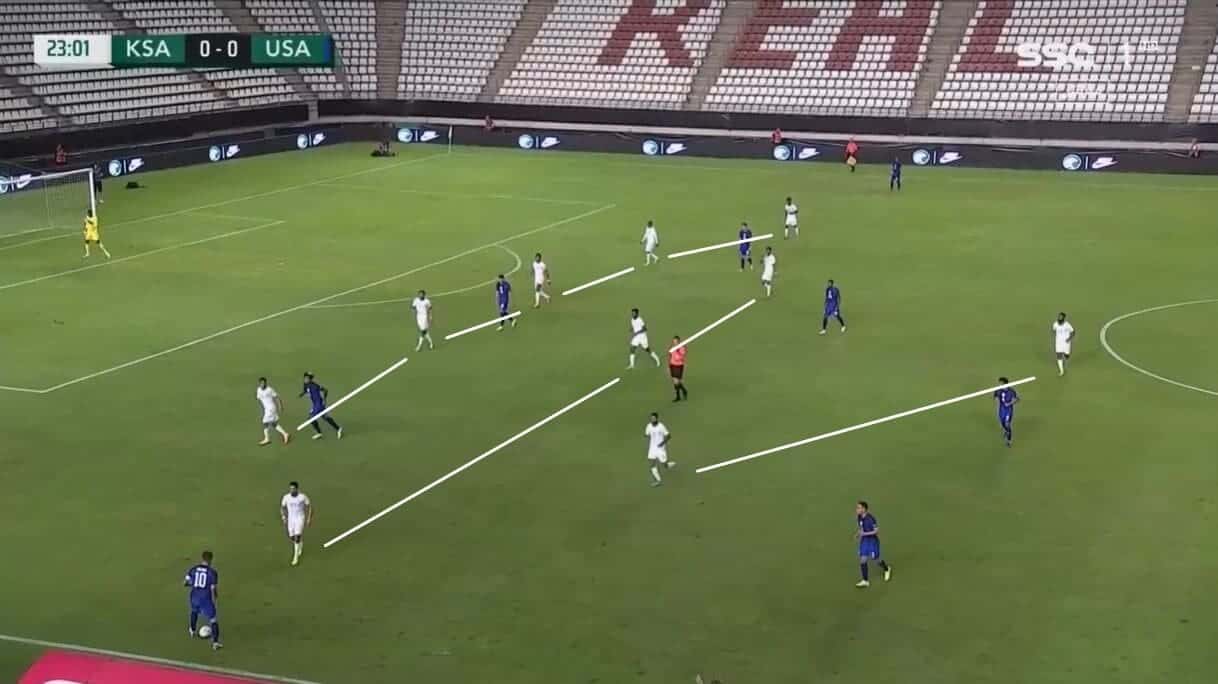
The game against the USA back in September was a prime example of that ability to alternate.
Renard initially asked his team to play in a 4-4-2 formation when out of possession, with players continually rotating and taking turns pressing the ball forward.
However, issues with that setup became clearer as the game progressed.
The gaps between individual players and between the lines made it easy for the USA to play through them and into the areas behind them.
As a result, Renard changed his thinking and transitioned to a 5-3-2, which instantly positively affected his side.
Their lines were closer together, and they had an extra player in their back line to fill the previously prevalent holes.
That means that Chelsea’s former Borussia Dortmund forward Christian Pulisic can no longer move the ball into the middle with quite as much ease because his teammates are not in a position to control it and move it up the field.
As a result, it is now a lot harder for the USA to break Saudi Arabia down.
In previous analyses of Hervé Renard's defensive tactics, it has been noted that he tends to monitor what the opposition is doing with the ball and make tactical decisions accordingly.
That ability to read the game and act when necessary is one reason he has earned plaudits from those studying his tactics throughout his career.
His ability to adapt to different situations early and do what is needed to rectify them could have caught the FFF’s attention during their search for Diacre’s replacement and led to him becoming the frontrunner for the role.
Hervé Renard Non-negotiable Defensive Principles
However, despite the shape continually evolving as needed, some elements, including the need for numbers at the back, need to be in place for Renard’s defensive tactics to have the maximum effect.
Simply put, Hervé never wants his side to be outnumbered inside their own third, as he knows that being so will give the opposition an advantage whenever they get into that area.
Therefore, he insists that his team always have at least three players on the back line.
Before one player moves out to close the ball, another has to drop back in to maintain that structure.
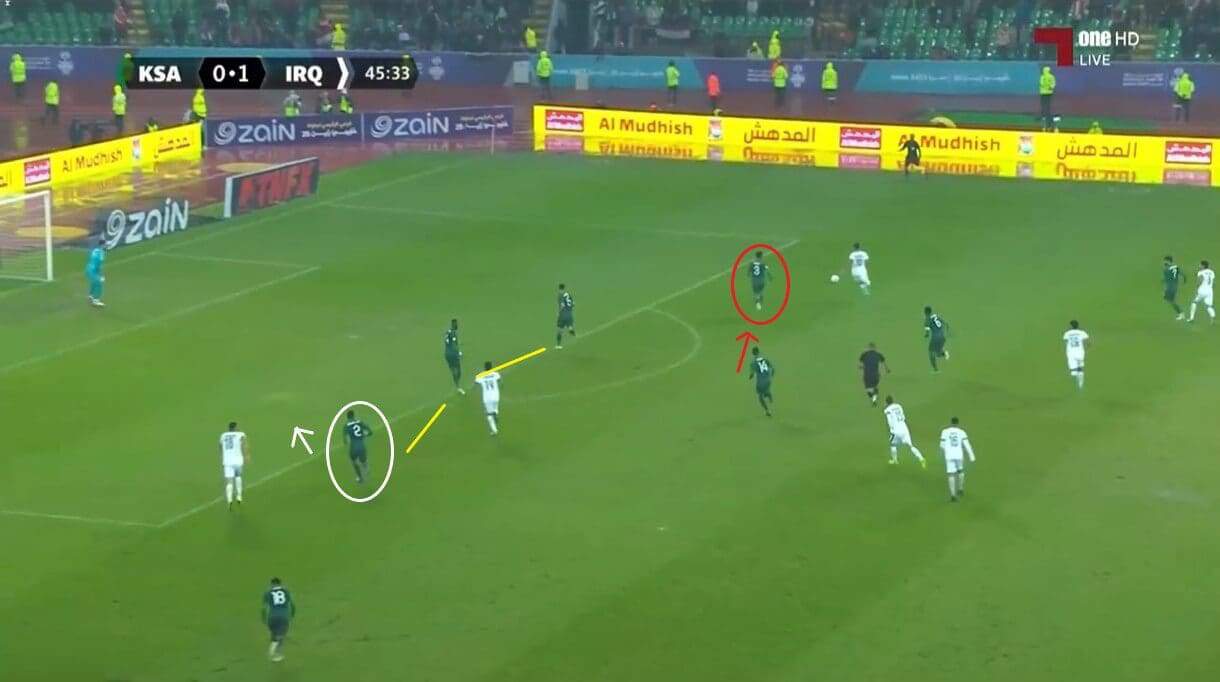
In this case, with Iraq’s Hasan Abdulkareem getting dangerously close to the Saudi Arabian goal area, Bamsaud has recognised the need to move out and close him down.
Still, he is unable to commit to any form of pressing until Madallah Al-Olayan has moved back towards the rest of the defensive line.
This ability to continually adapt and work together at the back is one of the main reasons that Saudi Arabia doesn´t concede many goals per game.
They let in an average of 1.5 in 2023 and just 0.92 in 2022, while they have been successful in 71.6% of their defensive duels during their four games so far this year.
Therefore, if Renard’s appointment as France’s head coach is confirmed as expected, France would have a coach who knows how to make his team challenging to beat.
That might help them regain confidence in their overall play after what has been a tumultuous period with Diacre at the helm.
Saudi Arabia Defensive Territory Map

When his teams tend to engage their opponents, that also tends to fluctuate.
This graphic indicates Saudi Arabia’s average defensive territory throughout Renard’s time in charge.
However, it is also clear that Saudi Arabia tends to make a greater percentage of its interceptions inside its own half and commit more fouls in the opposing half
This data suggests that the Saudis are more adept at defending in deeper positions and don’t often succeed when pressing up the pitch.
That is not always the case.
During his time in Africa, his sides pushed up the field to win the ball.
Again, this demonstrates that Renard is adaptable and devises game plans that suit his situation.
This is something else that the FFF may have been attracted to, and it will definitely help as they work towards what they hope will be a positive World Cup display.
Conclusion
In conclusion, this tactical analysis has looked at what French women’s football team fans can expect from their prospective new manager, Hervé Renard.
Talks reportedly ended successfully last week, and the only issue still to be resolved is his severance from the Saudi Arabian Football Federation.
Throughout the analysis, it has been clear that he would bring much clarity to France’s play and that he is not afraid to make changes during games if necessary.
Some who have studied his tactics have described them as “bold and audacious,” which will give the players a lot of hope that this is the start of a new era for them and one that includes more harmony between them and the coach.
So far, the reports are that they have taken well to his expected appointment, which is already a positive sign.
Perhaps those who spoke out and exiled themselves will return to the fold.
However, even with the expectation that some previously burnt bridges will be partially, if not completely, restored, it should be kept in mind that Renard has never managed in the women’s game before.
It will be an entirely new experience for him, and he will need time to adjust to its demands.
Unfortunately, that luxury will not be his, with a major tournament on the horizon.
The clock is ticking ahead of the trip down under, and work will need to start immediately if he is to have the desired impact and meet fan and board expectations when the action gets underway.





Comments